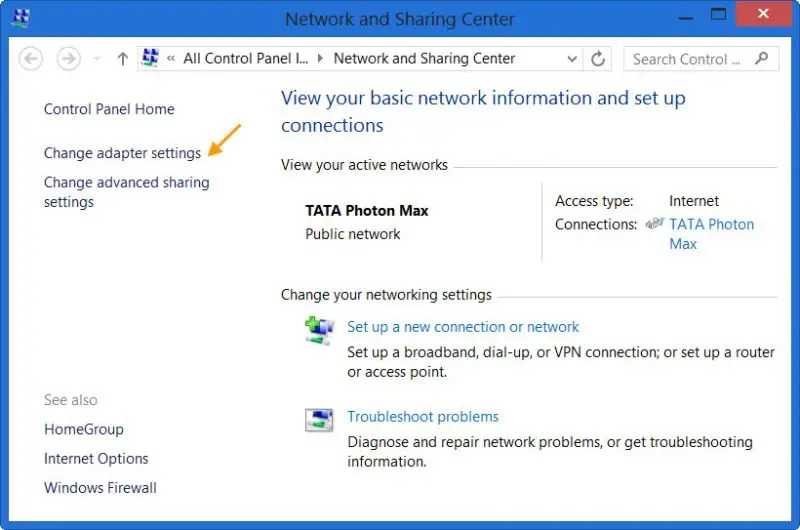

When enabled, it will transmit the Power ConstraintĮlement (IE number 32) in the beacon and probe response frames.Ĩ02.11h TPC also requires the Country element. 802.11h Power Constraint can be configured for 5GHz radios To limit the transmit power of mesh access points associating to root access Looking at TPC specifically, a power constraint can be used Outdoor wireless deployments, especially near airports, maritime ports and The IEEE 802.11h mechanisms are carefully considered for Over the maximum regulatory transmit power minus the power constraint. The access point and its wireless clients will ensure that they cannot transmit Power constraint in dBm and to reduce the interference with satellite services. Transmit Power Control (TPC): to enforce an additional
802.11D ENABLE OR DISABLE FREE
Move to another channel after checking that the new channel is free of radarįor 1 minute. Operational channel, it must stop using the channel for 30 minutes and will If the radio detects a radar signal on its In NETWORK | NETWORK INTERFACE | Radio0-802.11N 2.4GHz, set Client Power (dBm) to Local.ĭynamic Frequency Selection (DFS): to detect radar systemsĪnd to avoid co-channel operations. Limit the power level on associated client devices. Notice again that Aironet extensions must be enabled to On an autonomous Cisco access point, DTPC is disabled byĭefault and can be configured with the following radio interface command: Point when the access point transmit power is above 14 dBm with a Samsung S5 at Other words, there is no more performance gain in the direction to the access Power is greater than 14 dBm, the S5 transmit power has reached its maximum. In this example, when the access point transmit The access point transmit point within the client transmit power capabilities. To explain this, the CCX client set its power accordingly to When the AP power was above 14 dBm, the RSSI of the S5 was capped at -53 dBm with no growth.

When the AP power increased between 8 dBm and 14 dBm, the RSSI of the S5 frames increased up to -53 dBm. The averaged RSSI of the mobile phone frames (in red) was constant at -60 dBm while the AP power was between 2 dBm andĨ dBm. The RSSI of the access point frames (in blue) shows that theĪccess point transmit power was increasing with time. In WIRELESS | Country, select the Country Code.
802.11D ENABLE OR DISABLE CODE
Where the value CODE is the two-character ISO countryĬonfigured Country. On WLC, 802.11d is enabled by default using the country code Maximum value allowed for the country in the current channel. On the implementation and the value of the country code.Īssociated clients will limit their transmit power to the Transmit Power Output send to the antenna (TPO) or the Effective Isotropic Radiated Power (EIRP) depending This value in dBm is an indication of either the maximum Maximum transmit power level/Coverage Class: The subband, starting from the first channel number. Number of Channels/Operating Class: the number of channels defining Identifier: the lowest channel number of the subband. Indicates if the regulations are for indoor, outdoor or both environments. Indicate the regulatory domain (for example, AU – Australia).

The domain in term of allowed channels and maximum transmit output and can maintainĬompliance with the regulations of the country. With this element, the wireless clients can learn about When enabled, a Country information element is added to the beaconsĪnd probe responses. Standard 802.11d – and Cisco world-mode implementationĨ02.11 amendment that provides regulatory domain information. Similarly, the IEEE 802.11hĪmendment has a Power Constraint element to control the maximum Proprietary DTPC feature minimizes power consumption and can save batteryīy limiting the transmit power of CCX clients to the transmit power of theĪccess point radio. Lower data rates generally have higher transmit powers than higher data rates. The data rate and/or the modulation technique: the transmit power usuallyĭepends on the modulation technique (DSSS, CCK, OFDM, HT-20, HT-40) and the data rate of the transmission. (2.4 GHz, 5 GHz) and subband (UNII1, UNII2, UNII2-Ex, UNII3). The operational frequency: the transmit power may vary by band Power for compliance with the regulations of the country. Multiple country may be defined on the radio and will enforce a maximum allowed


 0 kommentar(er)
0 kommentar(er)
